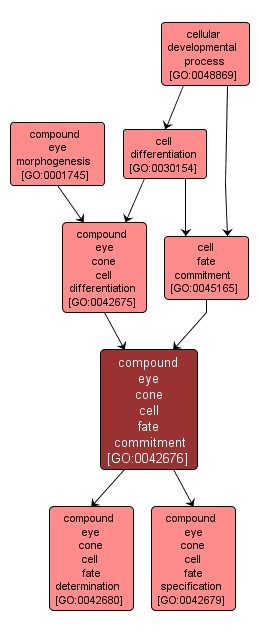GO TERM SUMMARY
|
| Name: |
compound eye cone cell fate commitment |
| Acc: |
GO:0042676 |
| Aspect: |
Biological Process |
| Desc: |
The process whereby the cone cells of the compound eye, the lens-secreting cells in the ommatidia, adopt pathways of differentiation that lead to the establishment of their distinct cell type. |
| Synonyms:
|
|

|
INTERACTIVE GO GRAPH
|














